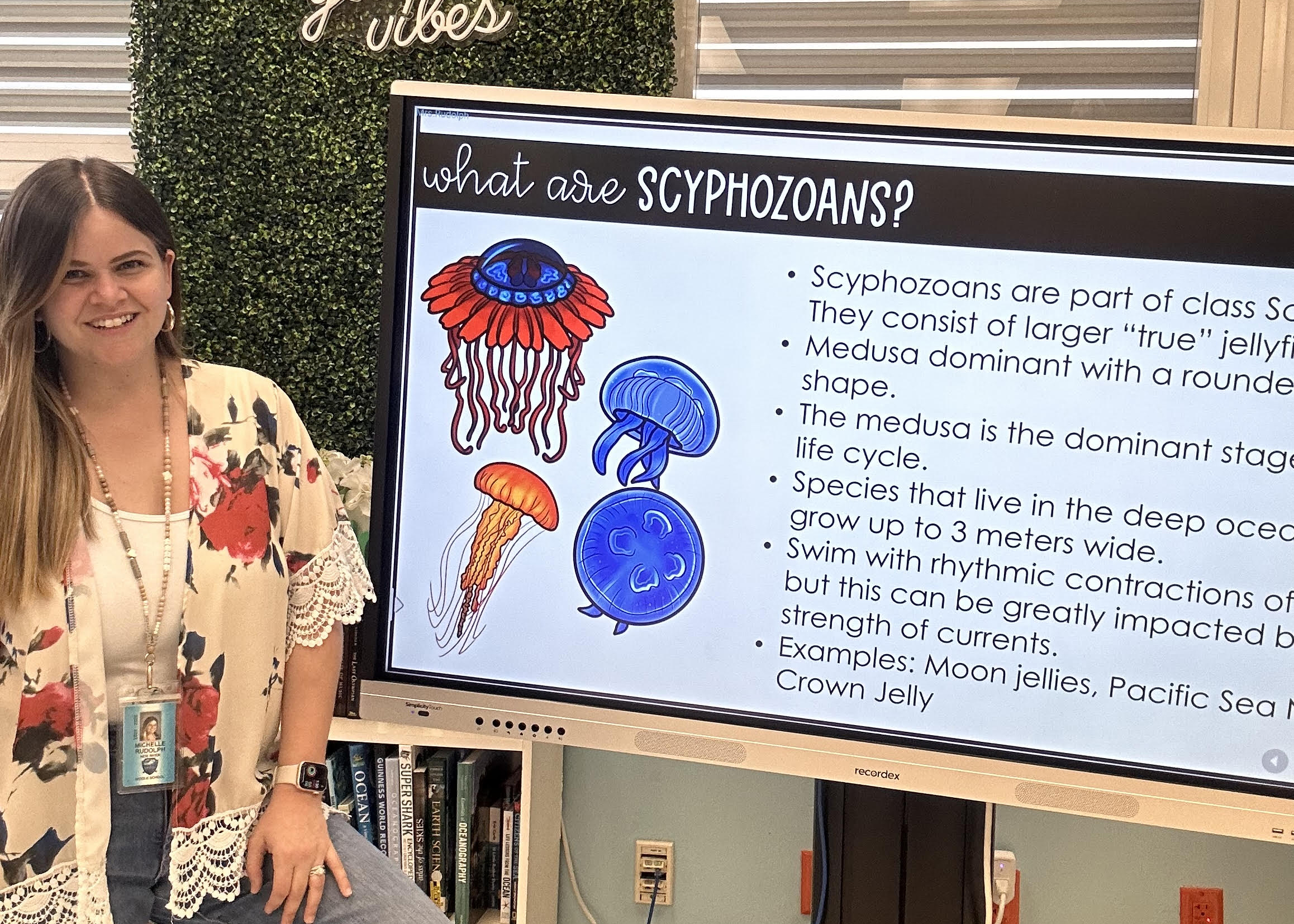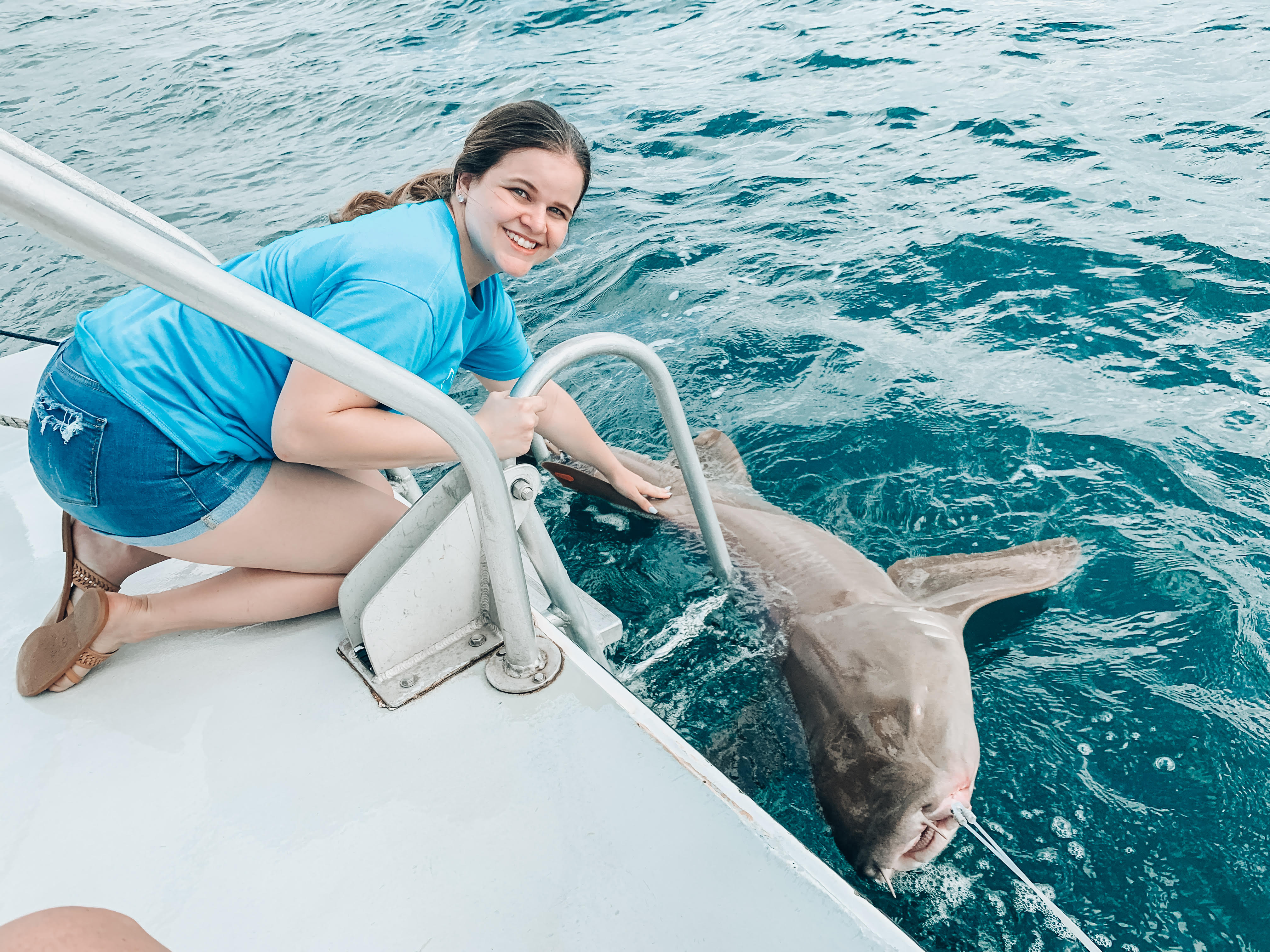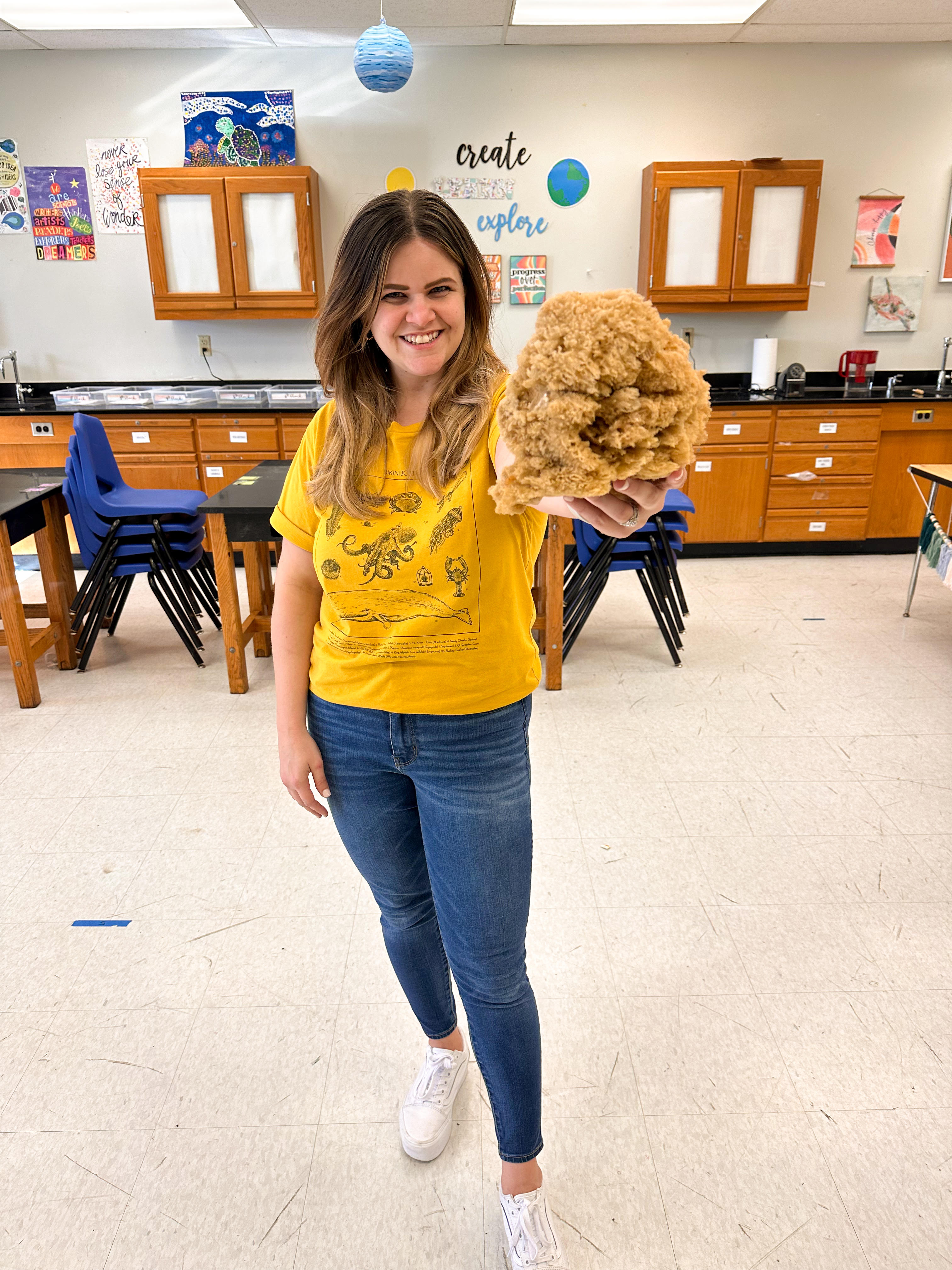
Michelle is the very creative founder of Secondary Sparks and also a middle school science teacher who loves marine science. She is grateful to be a native Floridian located in Fort Lauderdale where she gets to be in the place she loves most- by the ocean!
“I have wanted to be a teacher since I was in first grade. I used to teach my dolls and stuffed animals!” laughed Michelle.
Teaching Marine Science
Not only do Michelle and her students live in a place conducive to teaching marine science but, “I get to teach something I am passionate about and encourage other students to love as well. Bringing students out to the ocean for field trips is a huge plus! We have gone kayaking, snorkeling and shark tagging! It’s the best type of field experience and the students learn so much being in our subject’s’ environment,” shared Michelle.
Michelle recognizes Florida is an enviable place to teach marine science. At Secondary Sparks, Michelle has been most motivated by creating high quality resources easily accessed by both students and teachers. She wishes teachers could engage students with activities that are not so cost prohibitive. “Many students in low socioeconomic areas lose out on opportunities that could be life changing for them due to lack of funding,” said Michelle. We share this sentiment at Shape of Life.
Hands On!
In the classroom, Michelle loves to do labs, stations activities, dissections, project-based learning and occasionally has guest speakers talk to students about careers in the marine science field. “These activities bring it all to life which, in my eyes, is what science teaching is all about”, said Michelle.
Michelle learned about Shape of Life from a fellow marine science teacher and “I was hooked! Students love the videos and activities because they can actually see the organisms we talk about in class! Shape of Life brings students into the organisms’ world. The lessons and activities provided really make learning exciting for students.”

A Case for Project-Based Teaching
“Project-based learning is my favorite. Students need that real-world connection and when they are actively participating in it, the learning becomes so much more meaningful for them. Especially when you can infuse other disciplines within it such as math, language arts and social studies”, said Michelle.
Michelle wants students to learn in a way that is digestible for them while also keeping it interesting. “I constantly strive to grab my student’s attention where labs and project-based activities play a huge role,” said Michelle.
“My resources have been used by thousands of teachers around the world because of Secondary Sparks. There isn’t a lot out there for marine science teachers. It’s been really gratifying to share resources with teachers like me. My aim is to make resources easy to use, low prep and highly visual and adaptable for students and teachers,” shares Michelle.

About Teaching Climate
Lately, Michelle has been teaching students about the impacts of ocean acidification on organisms with calcium carbonate shells.
“We desperately need district support for climate change education. Everyone is impacted!” said Michelle. “Putting the power in our students' hands through climate education empowers them and future generations. My students are young, but they love being appreciated for making a difference in the health of our collective environment.”
We have no doubt that Michelle’s students appreciate her attention to them and their place in the environment.
P.S. If you haven’t heard of Secondary Sparks, as a middle school science teacher, you probably should. You’ll find cool resources like an interactive notebook set-up kit and great lesson plans and activities. There is also a Free Resource Library with activity choice boards, marine science pacing guide and a Seaweed Scavenger Hunt activity guide.
















